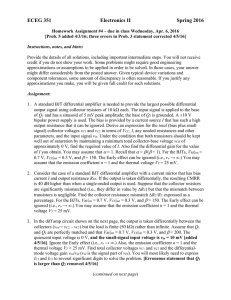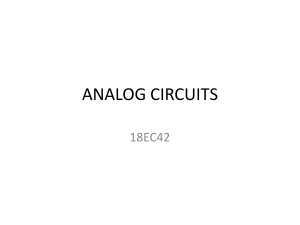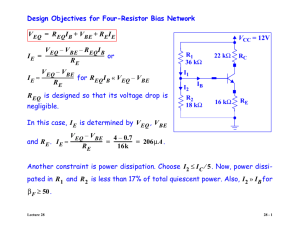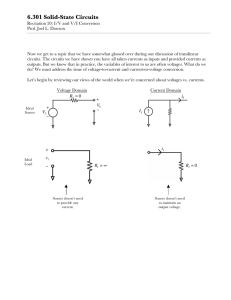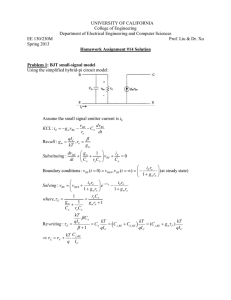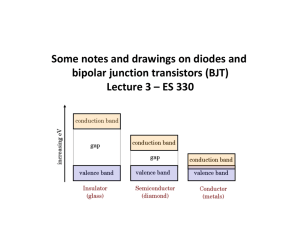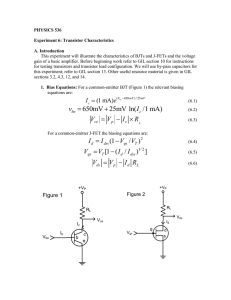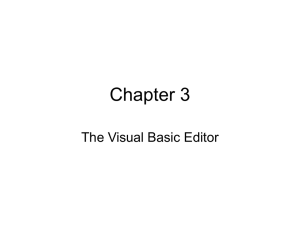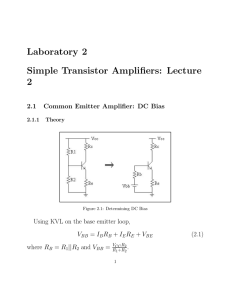Physics 120 - David Kleinfeld Spring 2016
advertisement
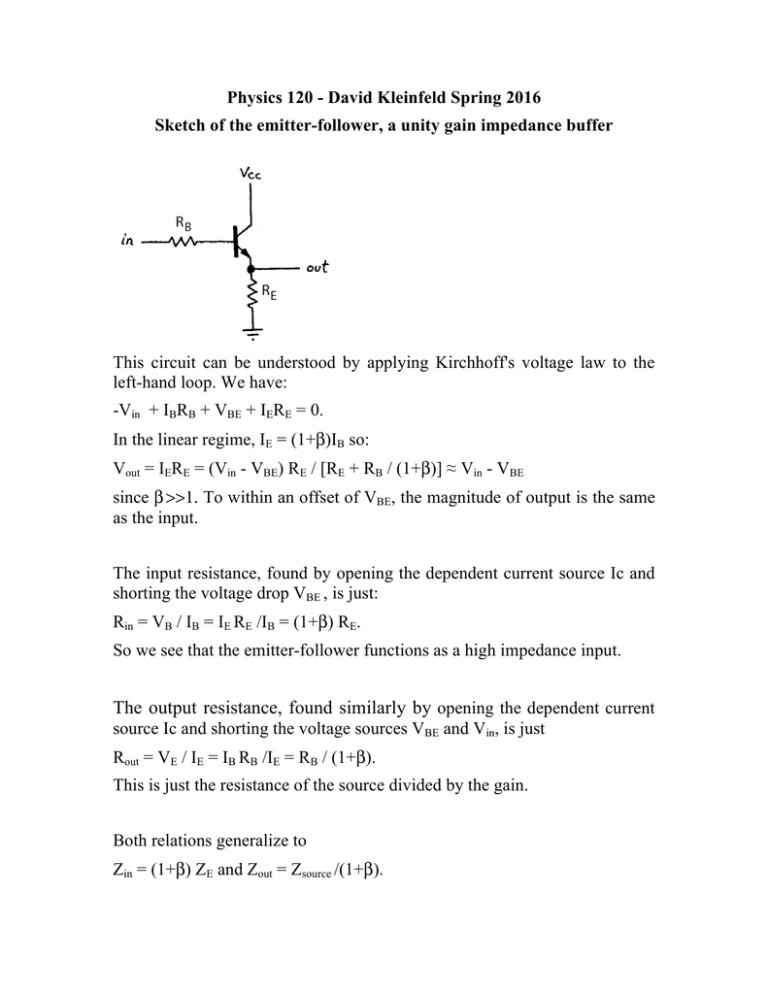
Physics 120 - David Kleinfeld Spring 2016 Sketch of the emitter-follower, a unity gain impedance buffer This circuit can be understood by applying Kirchhoff's voltage law to the left-hand loop. We have: -Vin + IBRB + VBE + IERE = 0. In the linear regime, IE = (1+β)IB so: Vout = IERE = (Vin - VBE) RE / [RE + RB / (1+β)] ≈ Vin - VBE since β >>1. To within an offset of VBE, the magnitude of output is the same as the input. The input resistance, found by opening the dependent current source Ic and shorting the voltage drop VBE , is just: Rin = VB / IB = IE RE /IB = (1+β) RE. So we see that the emitter-follower functions as a high impedance input. The output resistance, found similarly by opening the dependent current source Ic and shorting the voltage sources VBE and Vin, is just Rout = VE / IE = IB RB /IE = RB / (1+β). This is just the resistance of the source divided by the gain. Both relations generalize to Zin = (1+β) ZE and Zout = Zsource /(1+β).
